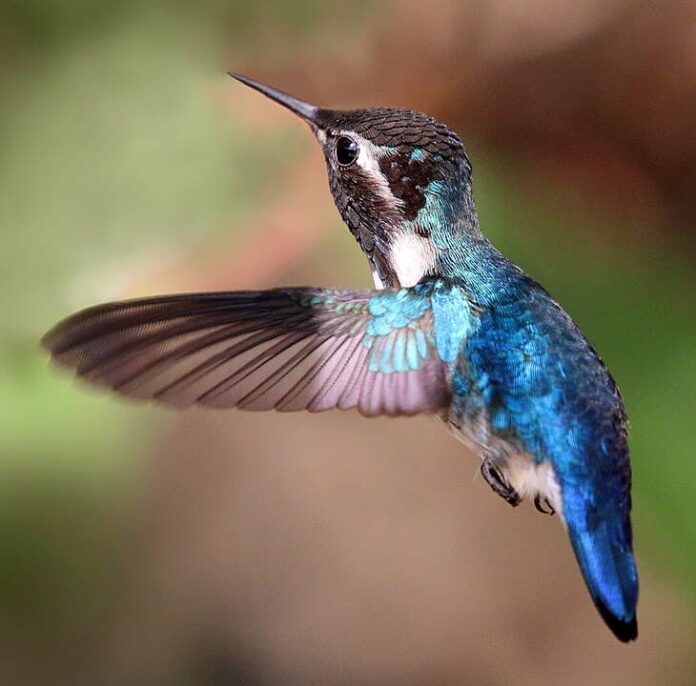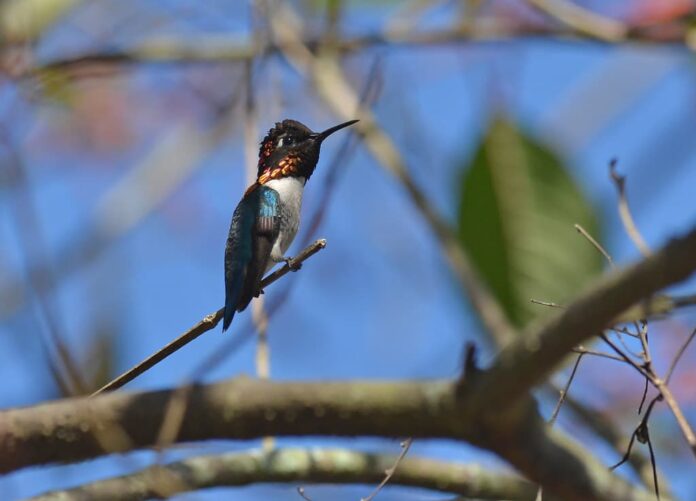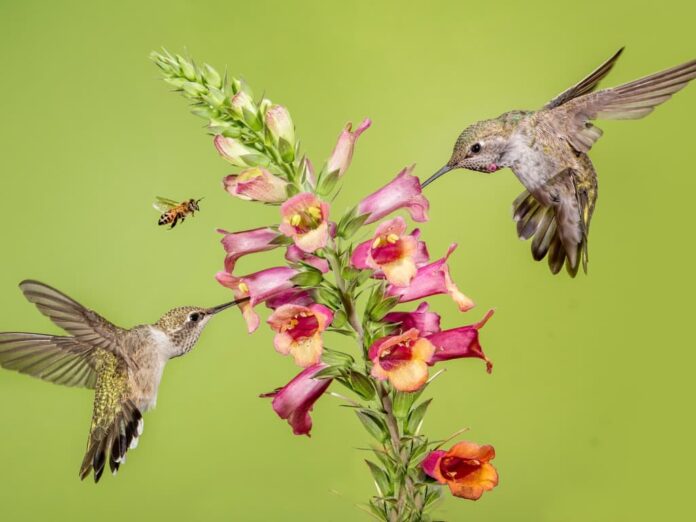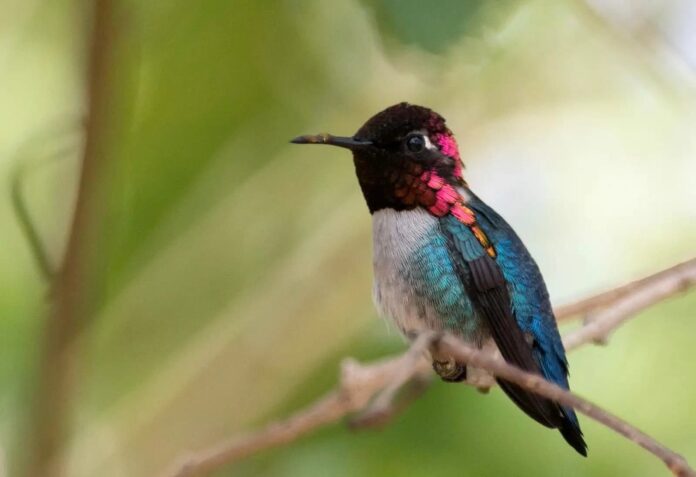So tiny yet so adorable, the bee hummingbird is the smallest bird in the world. Coming across one of them is extremely lucky because these little birds are super cute. If you squint hard enough, maybe you will spot one since bee hummingbirds are so small. In case you want to know more about them, feel free to check out some details below.
1Appearance

Being just 5.5 centimeters in size and 1.95 grams in weight, bee hummingbirds are the smallest birds in the world. Females are slightly larger and heavier than males, reaching 6.5 centimeters long and 2.6 grams in weight; still pretty small. On top of that, bee hummingbirds are rather round and plump while most small hummingbird species are slender. Apart from the size, you can also distinguish between males and females by their colorations. Males have a green pileum (top of the head to nape) and bright red throat along with iridescent gorget. Their plumes are elongated with bluish upper parts while the rest of the underparts are grayish-white. As for females, they are bluish-green with a pale gray underside with white spots on their tail feathers.
2Behavior

The small size actually boosts the speed of the birds, and these swift little birds are actually pretty strong fliers. Do you know that bee hummingbirds beat those tiny little wings of theirs from 80 to 200 times per second? Yes, that is how they remain stationary in the air while feeding on flowers. And this incredible skill also earns the bird the title for the fastest wingbeats in the bird world as well. What about them being strong fliers? To be able to fly straight up, down, backward, and even upside down is something that not every bird has.
And do you know what the smallest birds in the world have? The smallest nest and eggs, as the nest are only 2.5 centimeters in diameter and depth, and eggs the size of a coffee bean. A female bee hummingbird lays 2 eggs and incubates them within 21-22 days before letting them fledge at 18-38 days after. To get a mate, the males use their colorful plumes to look their best in the mating dance to attract a partner. However, they are usually solitary and very territorial so they only come together during the breeding season. And why the name “bee”? Because a bee hummingbird makes a buzzy noise similar to a bumblebee during the flight.
3Feeding & Habitats

A bee hummingbird has a slender and pointy bill that allows it to probe into deep flowers. Just like many hummingbirds out there, this one mainly feeds on nectar from 10 flower plant species and sometimes insects. The best part is that they are one of the most important pollinators because of their feeding habits. Each time it feeds, it picks up pollen on its bill and head and it transfers the pollen as it flies. And since a bee hummingbird can visit up to 1,500 flowers in one day, that is a lot of pollination.
The bee hummingbirds are native to the island of Cuba and the Caribbean, inhabiting areas with thick growth of epiphytes and lianas. They live in dry forests, forest edges, and rainforests as well as mountain valleys, rural gardens, and swamplands. These birds actually prefer areas with the plant Solandra Grandiflora, a vine with large ornamental flowers which is their favorite nectar source.
4Predators & Threats
This tiny size actually brings them vulnerability to a wide of predators such as birds, fish, frogs, and spiders. Natural predation is not the only thing that threatens the population of the little bee hummingbird. Habitat loss due to deforestation and the conversion of land to farmland and pastures are more serious and threatening. And that is what leads the bee hummingbirds to have the status of Near Threatened on the IUCN Red List.
Related Post: Sword-Billed Hummingbird Facts




